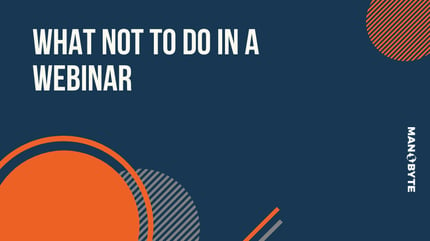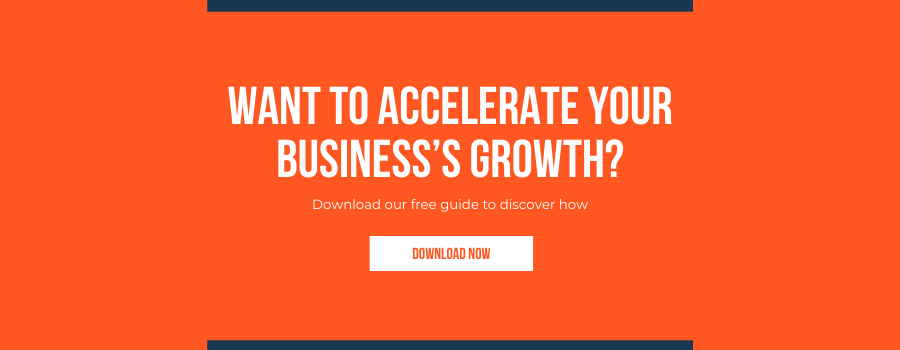
In the midst of the COVID-19 pandemic, many of us are spending lots of time in virtual gathering. Zoom calls, Microsoft Teams meet-ups, and GoToMeeting connections are ever-present in our business and personal lives. Businesses in particular have had to shift their events, programs, meetings, information sessions, and training seminars to online formats. The webinar is now an all-too-familiar format for us.
With webinars becoming more frequent, many professionals are being thrust into the role of virtual event planners. Creating an effective, compelling webinar means marketing differently, conceiving of content differently, and structuring events differently. To be effective, you need to do more than send out a link to a Zoom meeting. Here’s a look at what not to do when planning a webinar for your business.
What Is a Webinar?
A webinar is a web-based event that usually involves presenters who provide content about an issue, product, service, trend, event, or concept. Often, multiple presenters are involved. At times, presenters will, like when presenting in person, have slides, videos, or other visuals that need to be shared with attendees. There may be handouts and other content that attendees need to engage successfully.
Effective webinars also allow presenters to interact with attendees, either via question-and-answer sessions, breakout rooms, interactive polls and quizzes, or direct conversations.
The webinar format, especially in times when travel is curtailed, social distancing and mask wearing are required, and physical connection is not allowed, can be a powerful and effective way to get messages delivered. Here are some of the core benefits:
Expanded Reach
Webinars allow for global participation, without the need for airplane and hotel reservations, travel expenses, conference fees for attendees, and costs for organizers.Connection
A video posted on YouTube can also provide information effectively. But it doesn’t allow for the interactivity, albeit virtually, that webinars provide.
Record For Later
Many webinar platforms allow you to record the presentations, Q&A sessions, and interactions that create a rich experience. Recording a webinar allows you to share it with those who could not attend at the time it was originally offered.
Lead Generation
Sign people up for your webinar and you’ve created another lead generation tool that lets you follow up to provide more information or engage in sales conversations.
When all is said and done, the webinar, like most good inbound marketing, is a powerful way to connect with customers where they are, both figuratively and literally.
Webinar mistakes to avoid
Here are a few practices that are unfortunately all to common with webinars, so steer clear!
1. guessing at Your Audience
Be sure you understand the audience members likely to attend your webinar. What are their needs and goals? Why will they be tuning in?
2. Presenting Content that doesn't fit the format
Certain types of content are better than others for presenting using a webinar format. Panel discussions on a current news topic, detailed insights into a niche from a new angle, or an interview with a thought leader all make excellent webinars. But a sales deck presentation, minor product upgrade, or a how-to tutorial may not be the best choice for this format.
3. An unClear Concept
Webinars can get convoluted quickly if they try to do too much. Think about your own experiences. You’re less likely to sit in a virtual call if the presentation is long and tries to cover many different concepts. It’s far more effective to focus on a content idea and stick to it.
4. picking speakers at random
Industry experts, influencers, analysts, and media figures make excellent speakers. Hosts and speakers should be engaging, passionate, energetic, and relevant. Spend time considering who would be best to represent your brand and deliver sought-after information. Also make sure to meet with your speakers and host, ideally all together, to ensure questions are answered, logistics are coordinated, and technologies are explained.
5. thinking about desktop, not mobile
Your viewers may not all be using a desktop computer to access your webinar. While the numbers might be small, you still should be aware of things you can do to make it a better experience on mobile devices. Consider increasing the size of your visuals and text and using a platform that’s mobile-friendly.
6. Not Promoting for SEO
You should think of your webinars as you do other content, such as blogs, white papers, videos, or infographics. Be sure that you choose titles and descriptions that will draw on keywords that attract desired viewers. Promote the content as you would via social media, email marketing, paid advertising, and website banners. Consider cross-promotion opportunities with other organizations, especially those that employ any panelists or presenters. Using a good SEO strategy improves the reach and impact of your webinar.
7. not Promoting Your Products
It’s OK to make a sales pitch during your webinar. You just shouldn’t turn the entire presentation into an advertisement. Aside from the pitch, the rest of the content should be useful, whether your product is a factor or not.
8. Leaving no Time for Questions
One of the biggest benefits of the webinar format is that you can field questions from participants. You should leave ample time for questions and answers. It’s best to use a platform that lets the audience ask questions at any time during the webinar. It’s also wise to prepare the presenters for any questions that may be controversial, complex, or difficult.
9. forgetting to Follow Up
Connecting with participants after the webinar is over is critical. Reach out within a day to those who attended and those who RSVP’d but did not attend. Ideally, include the slides or a link to the recorded webinar. You can also include a survey or feedback tool to gain insights on how the webinar was received.
Manobyte delivers technology and marketing solutions for B2B mid-market companies to transform operations and grow. Learn more about our digital marketing, sales, and operations solutions by contacting us today.
Ready to Dive In?
Work with our team of Business Process experts and watch us take manual clunky systems, tech stacks, and processes and turn them into tailored, intelligent workflows that deliver business outcomes.


